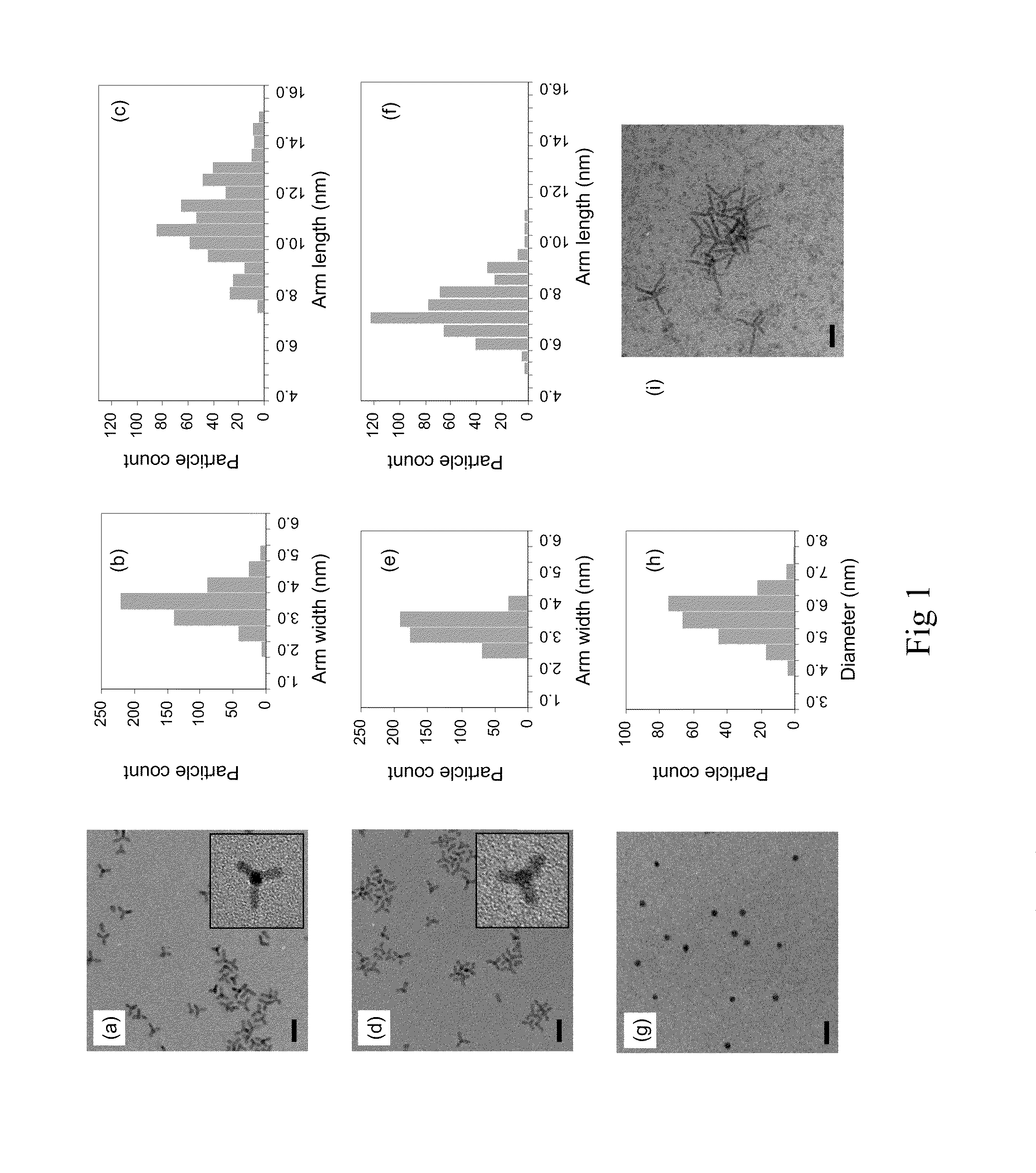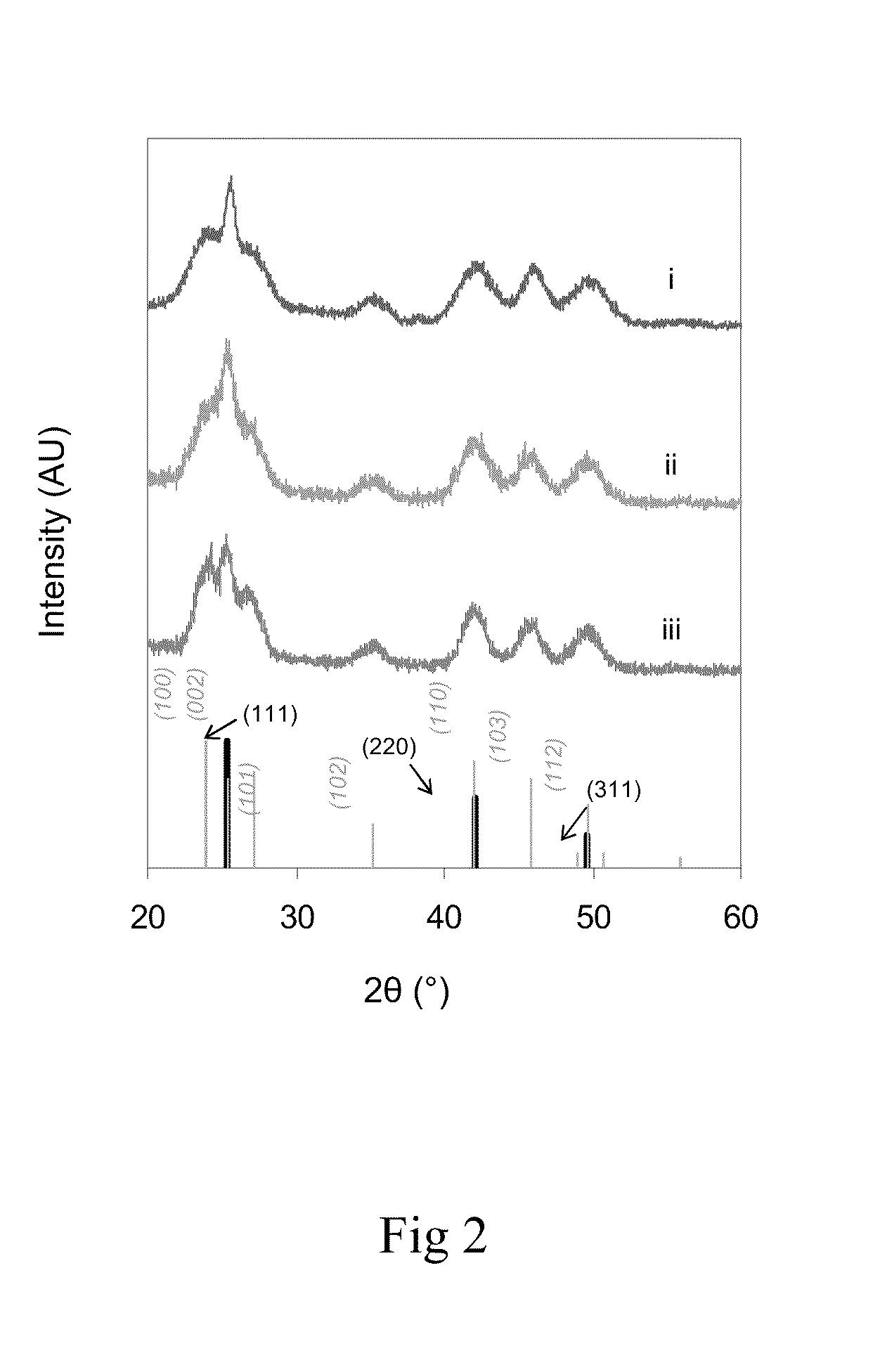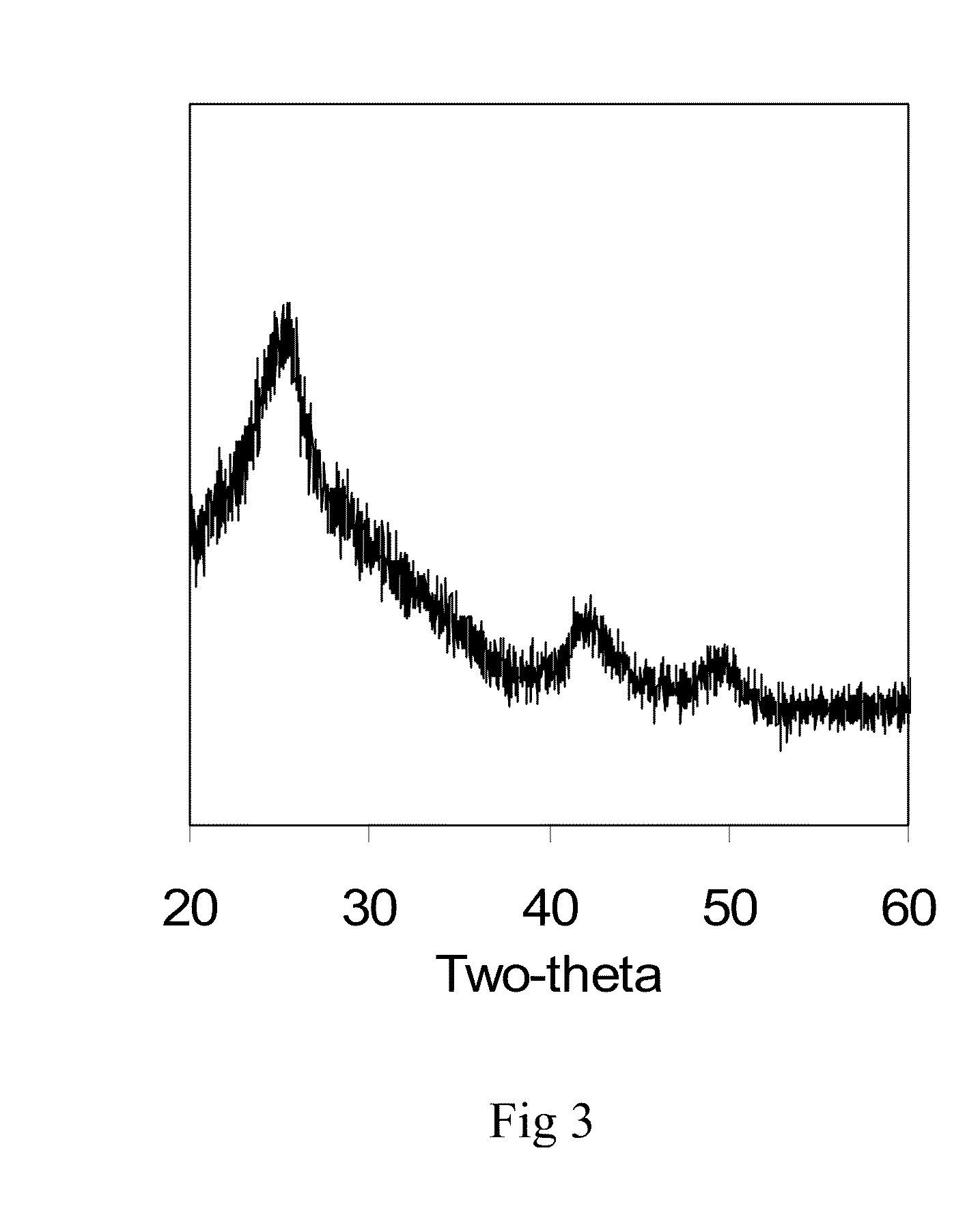Synthesis of Uniform Nanoparticle Shapes with High Selectivity
a nanoparticle and shape technology, applied in the field of nanoparticle compositions, can solve the problems of high shape selectivity and size uniformity that are difficult to achieve for nanoparticles with more complicated shapes and compositions, and the phosphonic acid ligands used by these methods are exhorbitantly expensive, so as to achieve the effect of convenient performan
- Summary
- Abstract
- Description
- Claims
- Application Information
AI Technical Summary
Benefits of technology
Problems solved by technology
Method used
Image
Examples
example 1
[0046]A cadmium precursor solution was prepared by heating 0.103 g of CdO (0.8 mmol, 99.99 percent, all chemicals by SIGMA-ALDRICH™ unless indicated otherwise) in 20 ml of octadecene (“ODE,” 90 percent) containing 2.825 g of oleic acid (“OA,” 10 mmol, 90 percent) to ˜140° C. under argon atmosphere, at which the mixture turned clear and colorless. The Cd solution was cooled to room temperature. The selenium precursor solution was prepared by combining 0.032 g Se metal (0.4 mmol, 99.999 percent) with 1.5 ml of trioctylphosphine (TOP, 90 percent) liquid, and then combined with 2 ml of a toluene solution of the quaternary ammonium compound (0.05 mmol). The quats studied were cetyltrimethylammonium bromide (98 percent), didodecyldimethylammonium bromide (98 percent), tetramethylammonium bromide (99 percent, FLUKA CHEMIKA™), tetrabutylammonium bromide (99 percent, FLUKA CHEMIKA™), tetraoctylammonium bromide, and tetradecylammonium bromide (99 percent, FLUKA CHEMIKA™). The Cd solution was ...
example 2
[0047]The cadmium precursor solution ([Cd]=0.8 mM, [oleic acid]=10 mM) was prepared by heating 0.103 g of CdO (99.99 percent) in 20 ml of octadecene (“ODE,” 90 percent) containing 2.825 g of oleic acid (“OA,” 90 percent) to ˜140° C., at which the mixture turned clear and colorless. The Cd solution was then cooled to room temperature. The selenium precursor solution ([Se]=0. 4 mM) was prepared by combining 0.032 g Se metal (99.999 percent) with 1.5 ml of trioctylphosphine (TOP, 90 percent) liquid, and then combined with 2 ml of a toluene solution (0.05 mM) of the quaternary ammonium compound (98 percent). The Cd solution was heated at a rate of 10° C. / min to 300° C., at which point the Se / quat solution was injected in 6 sec. Caution: injecting too rapidly leads to violent boiling of the reaction volume. The synthesis was carried out under argon flow. The reaction temperature dropped to ˜280° C. and held at this temperature. Withdrawn aliquots were immediately cooled in a room-tempera...
example 3
[0048]The slow decomposition method was used. In this method the Se / cetyltrimethylammonium bromide solution was combined with a cooled Cd precursor solution and heated slowly to 300° C. at the rate of 10° C. / min. The reaction flask was kept at 300° C. for 1 hr once the temperature was reached. In the synthesis of zinc blende CdSe QDs, 1 / 12th of the Se / cetyltrimethylammonium bromide precursor solution was used in otherwise identical hot-injection synthesis conditions. Withdrawn aliquots were immediately cooled in a room-temperature water bath. The resultant nanoparticles were recovered by precipitation using acetone, centrifuged and washed with acetone at least 3 times, and then re-dispersed in toluene.
PUM
| Property | Measurement | Unit |
|---|---|---|
| Fraction | aaaaa | aaaaa |
| Fraction | aaaaa | aaaaa |
| Fraction | aaaaa | aaaaa |
Abstract
Description
Claims
Application Information
 Login to View More
Login to View More - R&D
- Intellectual Property
- Life Sciences
- Materials
- Tech Scout
- Unparalleled Data Quality
- Higher Quality Content
- 60% Fewer Hallucinations
Browse by: Latest US Patents, China's latest patents, Technical Efficacy Thesaurus, Application Domain, Technology Topic, Popular Technical Reports.
© 2025 PatSnap. All rights reserved.Legal|Privacy policy|Modern Slavery Act Transparency Statement|Sitemap|About US| Contact US: help@patsnap.com



